Похожие презентации:
Power Requirements of A Vehicle
1. Power Requirements of A Vehicle
P M V SubbaraoProfessor
Mechanical Engineering Department
Match the Horse to theCart….
2. Animal Driven Vehicles
23. Cycle Work to be done by an Engine Directly Powering the Vehicle
The Powering Engine Torque is:T PE = F wheel r wheel
rwheel = Wheel Rolling Radius (meters)
The speed of the vehicle in km/h is:
Ideal capacity of Powering Engine:
km / h =
2 N PE
r tire
60
2 N
PPE TPE
kW
60000
Ideal cycle work of A Powering Engine:
2 N
PE
60
PPE T
N
2 60
4. Modern Cars are not Directly Driven!?!?!
45. High Way Driving Cycle
56. Urban Driving Cycle
7. Forces To be Overcome by an Automobile
8. Resistance Forces on A Vehicle
• The major components of the resisting forces to motionare comprised of :
• Acceleration forces (Faccel = ma & I forces)
• Aerodynamic loads (Faero)
• Gradeability requirements (Fgrade)
• Chassis losses (Froll resist ).
F Faero Frr Fg ma
9. Aerodynamic Force : Flow Past A Bluff Body
Composed of:1. Turbulent air flow around vehicle body (85%)
2. Friction of air over vehicle body (12%)
3. Vehicle component resistance, from radiators and
air vents (3%)
10. Aerodynamic Resistance on Vehicle
Dynamic Pressure:Drag Force:
Fd
Fd
Pd
1
V2
2
1
V 2 A f (Re)
2
1
V 2 Cd A
2
Fd ,design
Aero Power
1
(1.2) Cd A (V V0 ) 2
2
P = Fd ,designV
11.
Cd =A=
f(Re)
v=
V0 =
coefficient of drag
=
projected frontal area (m2)
= Reynolds number
vehicle velocity (m/sec)
head wind velocity
Paero
air density 1.2 kg/m3
1
(1.2) Cd A V (V V0 ) 2
2
12. Aerodynamic Drag on An Accelerating Vehicles
13.
14.
15. Purpose, Shape & Drag
Purpose, Shape & Drag16. Shape & Components of Drag
Shape & Components of Drag17. Some examples of Cd:
• The typical modern automobile achieves a drag coefficient of between0.30 and 0.35.
• SUVs, with their flatter shapes, typically achieve a Cd of 0.35–0.45.
• Notably, certain cars can achieve figures of 0.25-0.30, although
sometimes designers deliberately increase drag in order to reduce lift.
• 0.7 to 1.1 - typical values for a Formula 1 car (downforce settings change
for each circuit)
• 0.7 - Caterham Seven
• at least 0.6 - a typical truck
• 0.57 - Hummer H2, 2003
• 0.51 - Citroën 2CV
• over 0.5 - Dodge Viper
• 0.44 - Toyota Truck, 1990-1995
18.
0.42 - Lamborghini Countach, 1974
0.42 - Triumph Spitfire Mk IV, 1971-1980
0.42 - Plymouth Duster, 1994
0.39 - Dodge Durango, 2004
0.39 - Triumph Spitfire, 1964-1970
0.38 - Volkswagen Beetle
0.38 - Mazda Miata, 1989
0.374 - Ford Capri Mk III, 1978-1986
0.372 - Ferrari F50, 1996
0.36 - Eagle Talon, mid-1990s
0.36 - Citroën DS, 1955
0.36 - Ferrari Testarossa, 1986
0.36 - Opel GT, 1969
0.36 - Honda Civic, 2001
0.36 - Citroën CX, 1974 (the car was named after the term for drag
coefficient)
• 0.355 - NSU Ro 80, 1967
19.
0.34 - Ford Sierra, 1982
0.34 - Ferrari F40, 1987
0.34 - Chevrolet Caprice, 1994-1996
0.34 - Chevrolet Corvette Z06, 2006
0.338 - Chevrolet Camaro, 1995
0.33 - Dodge Charger, 2006
0.33 - Audi A3, 2006
0.33 - Subaru Impreza WRX STi, 2004
0.33 - Mazda RX-7 FC3C, 1987-91
0.33 - Citroen SM, 1970
0.32064 - Volkswagen GTI Mk V, 2006 (0.3216 with ground effects)
0.32 - Toyota Celica,1995-2005
0.31 - Citroën AX, 1986
0.31 - Citroën GS, 1970
0.31 - Eagle Vision
0.31 - Ford Falcon, 1995-1998
0.31 - Mazda RX-7 FC3S, 1986-91
0.31 - Renault 25, 1984
0.31 - Saab Sonett III, 1970
0.30 - Audi 100, 1983
0.30 - BMW E90, 2006
0.30 - Porsche 996, 1997
0.30 - Saab 92, 1947
20.
0.195 - General Motors EV1, 1996
0.19 - Alfa Romeo BAT Concept, 1953
0.19 - Dodge Intrepid ESX Concept , 1995
0.19 - Mercedes-Benz "Bionic Car" Concept, 2005 ([2]
mercedes_bionic.htm) (based on the boxfish)
0.16 - Daihatsu UFEIII Concept, 2005
0.16 - General Motors Precept Concept, 2000
0.14 - Fiat Turbina Concept, 1954
0.137 - Ford Probe V prototype, 1985
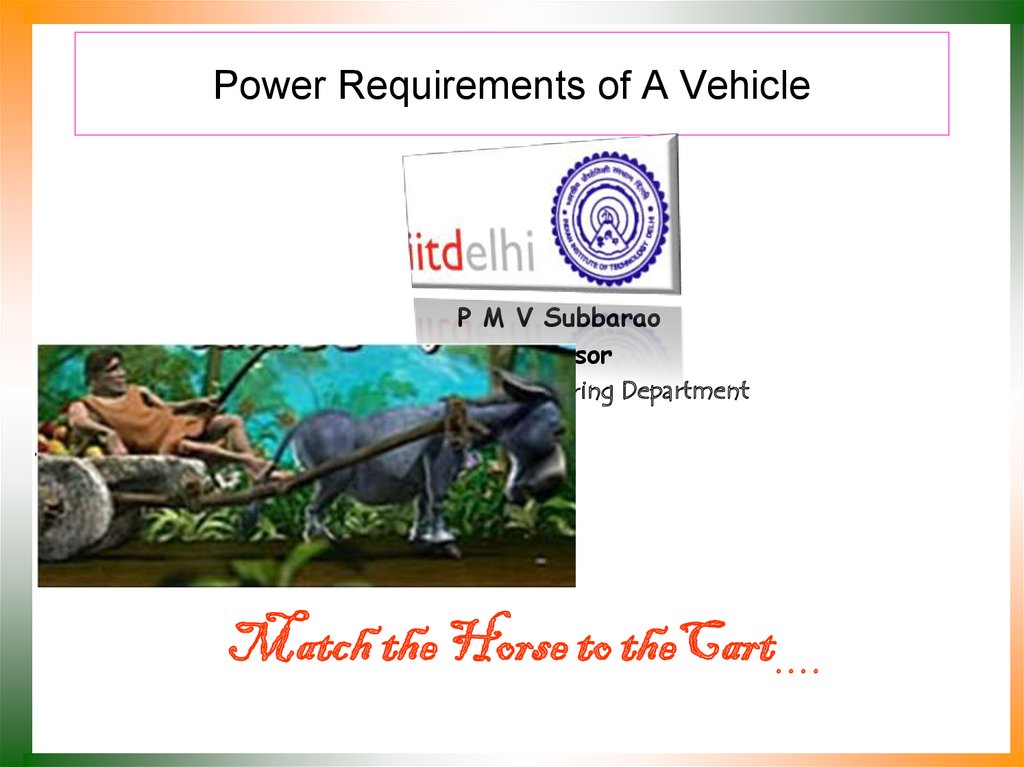

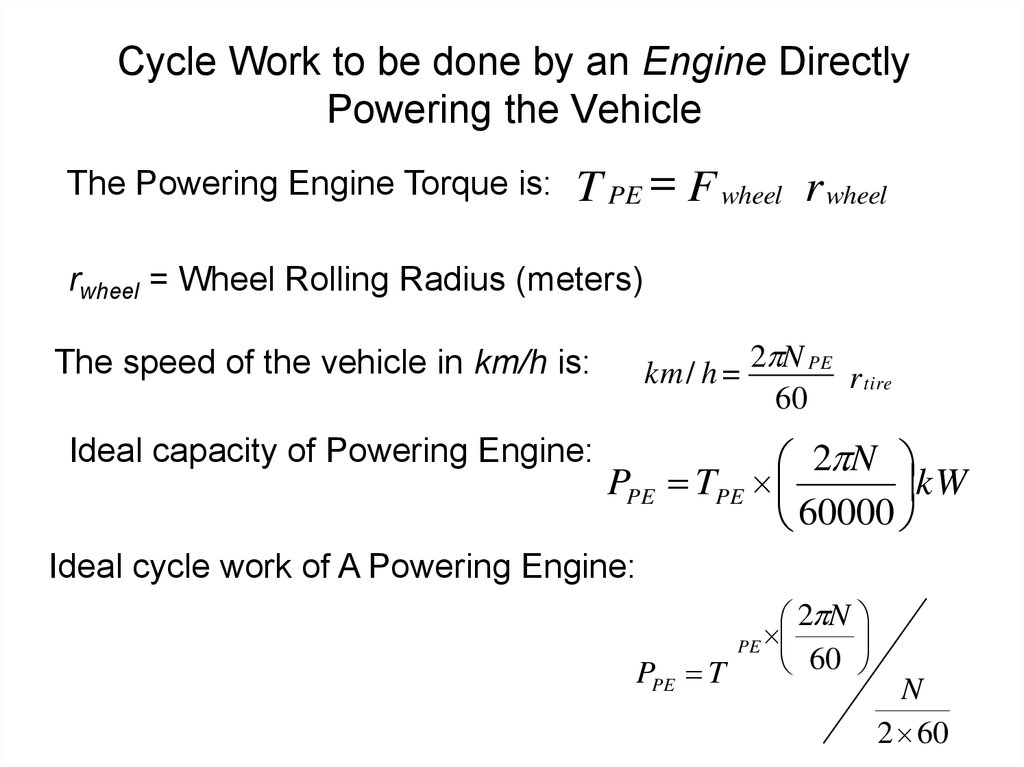


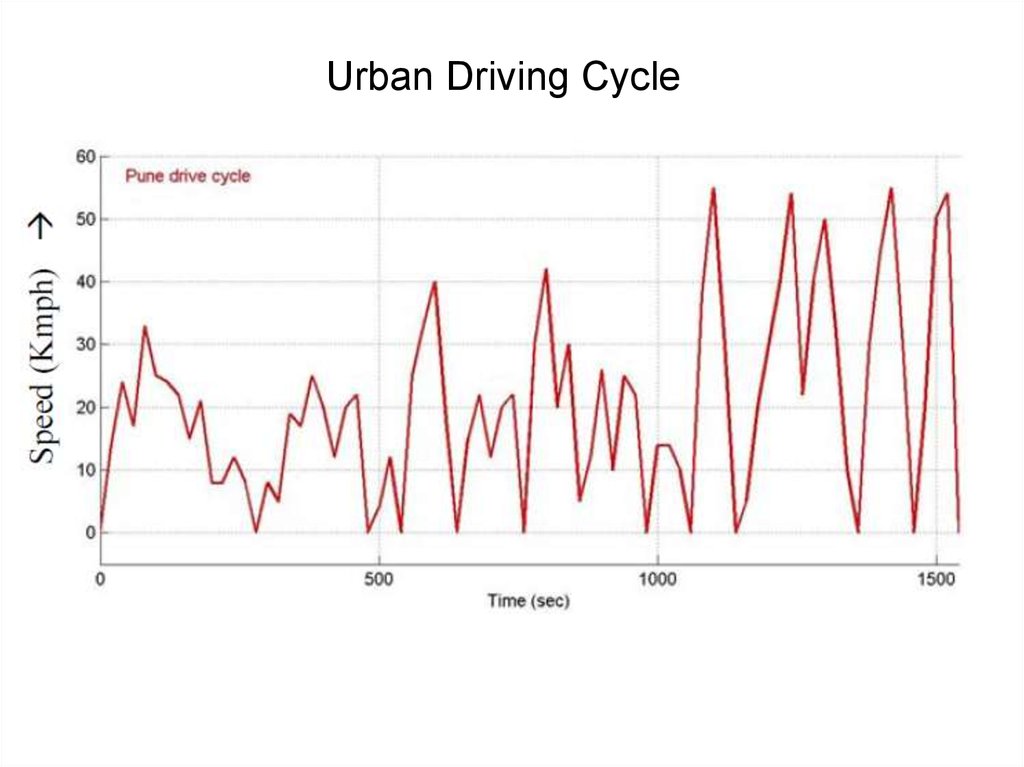

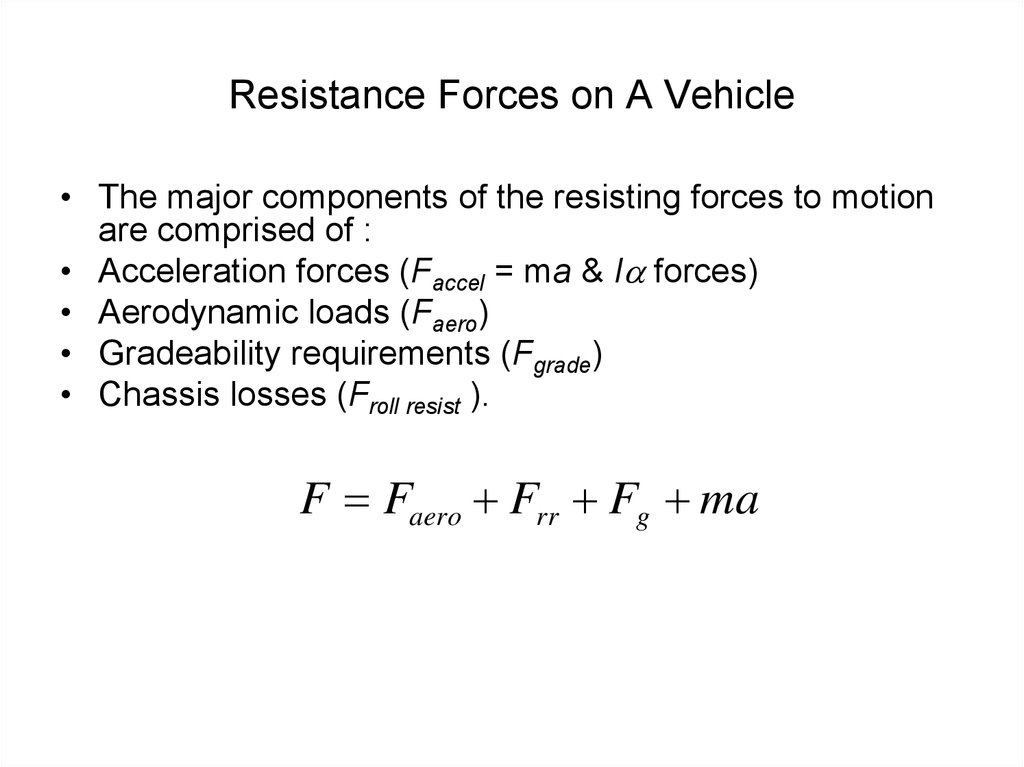


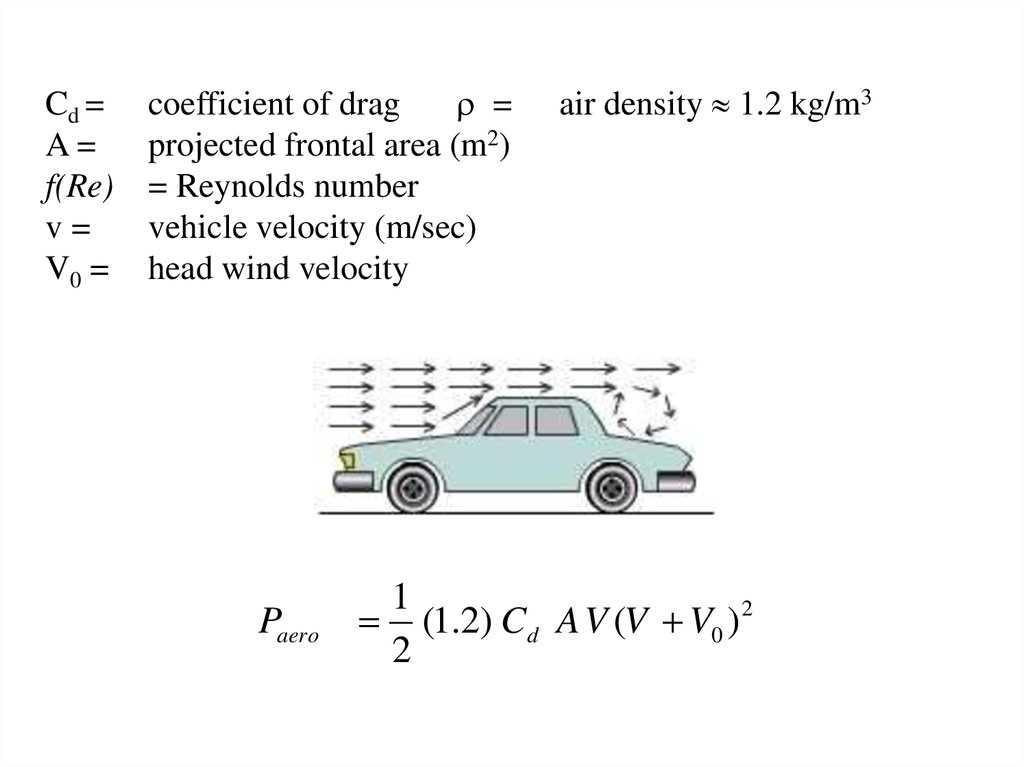


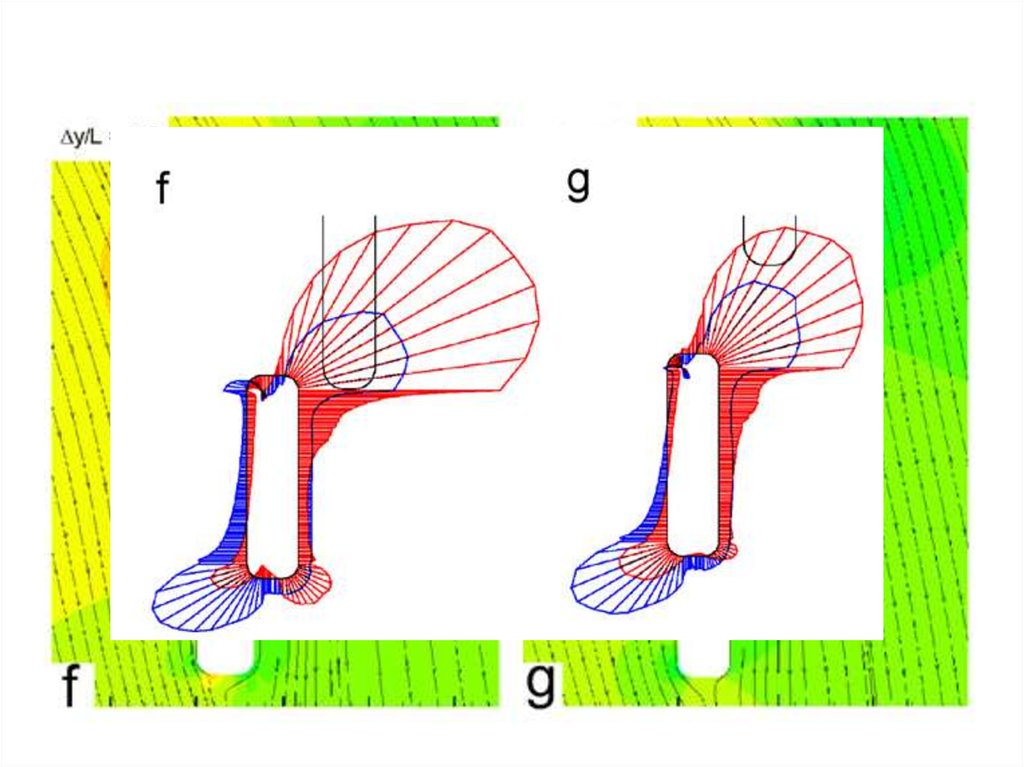
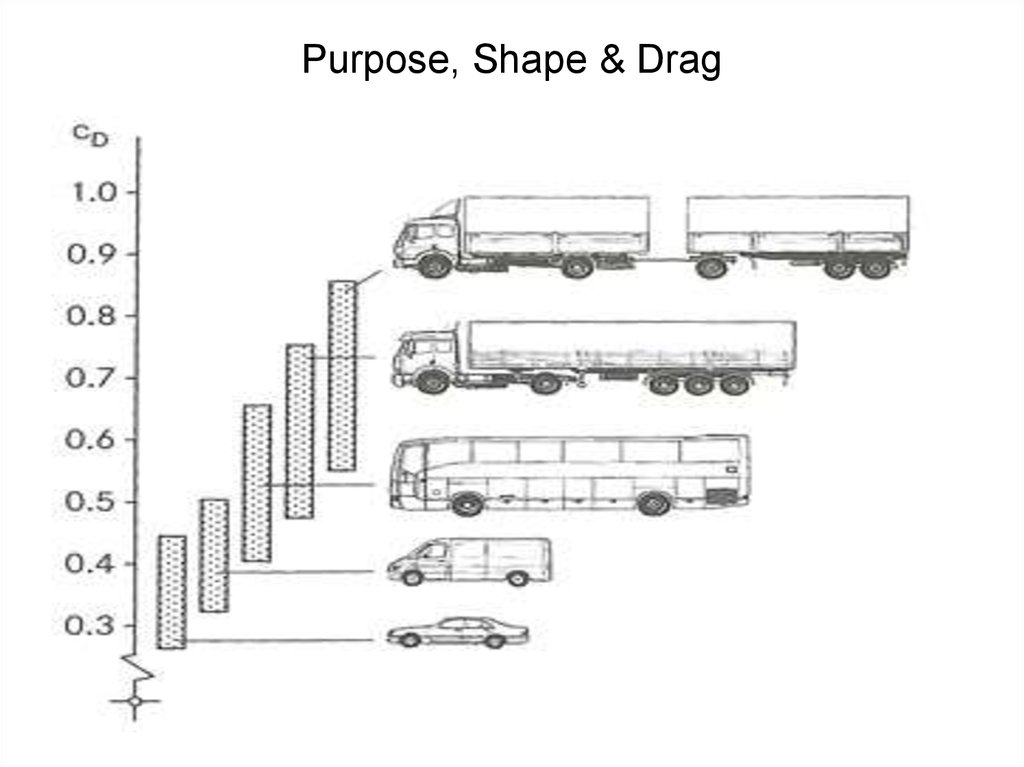

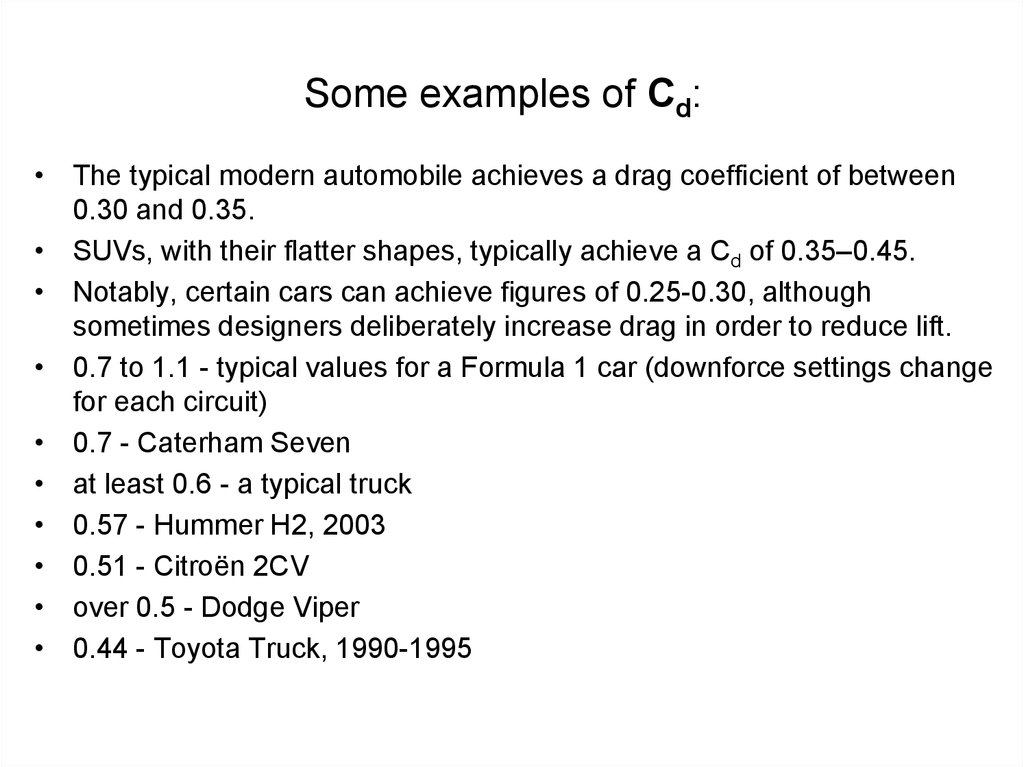
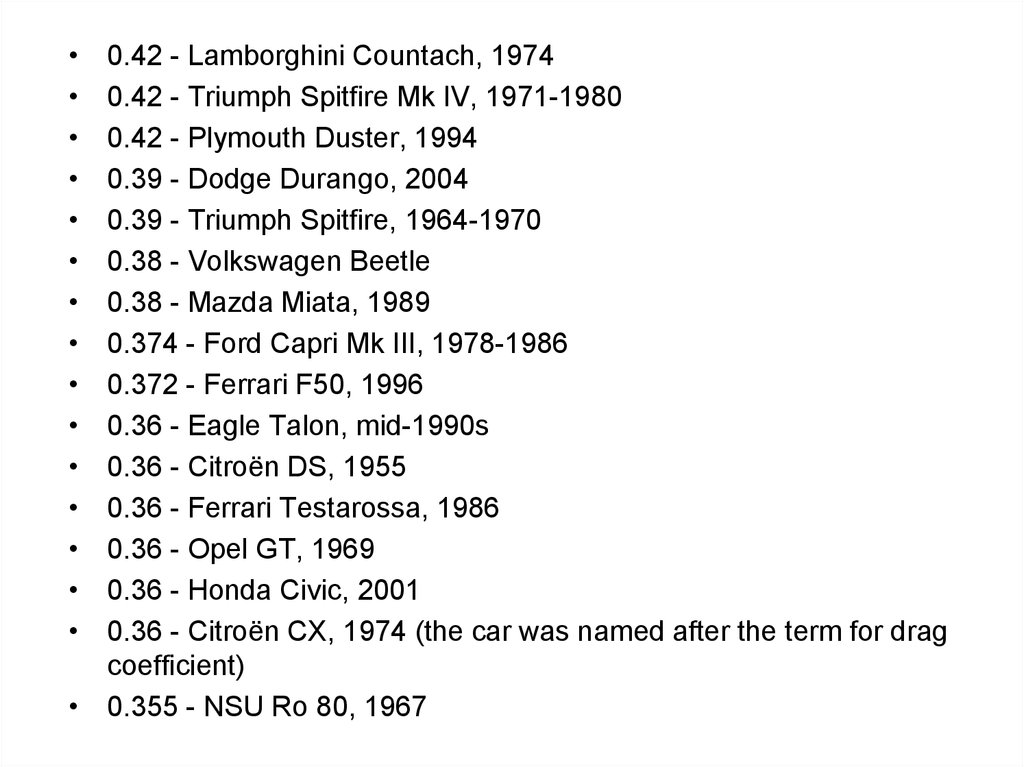
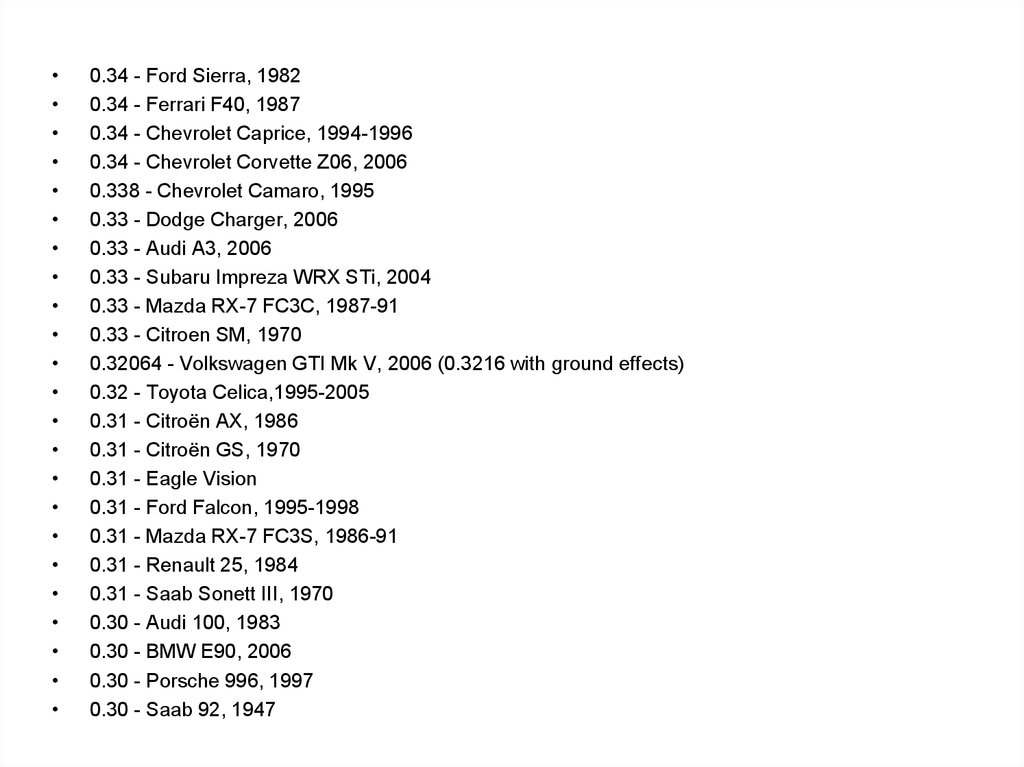
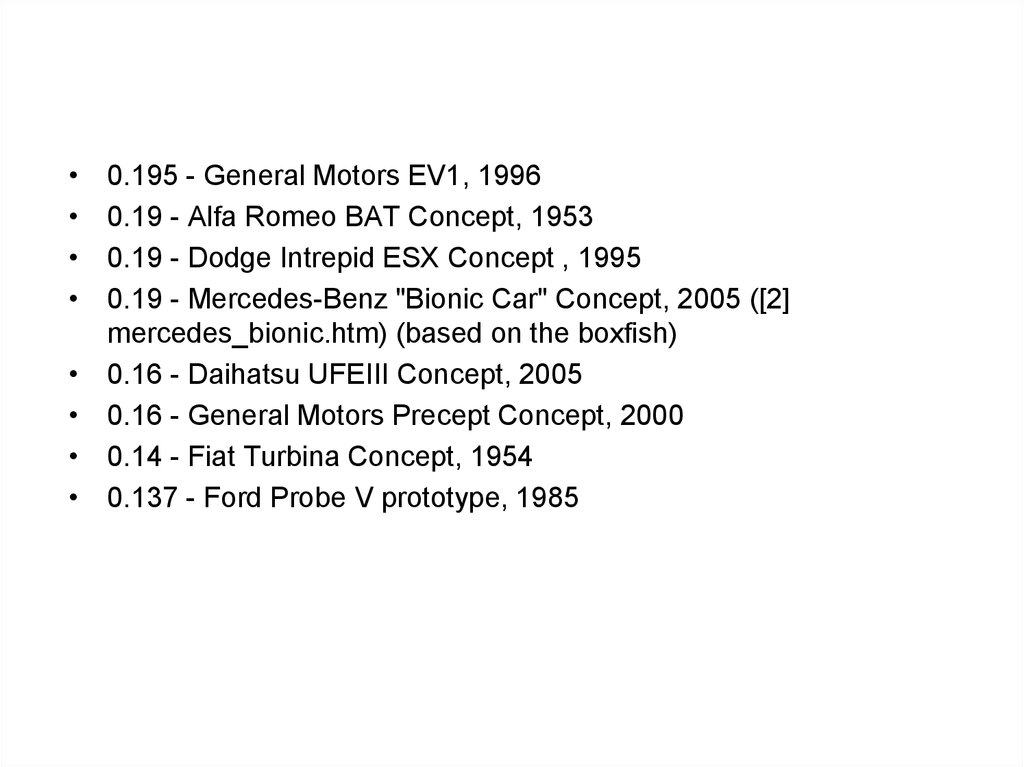
 Механика
Механика




